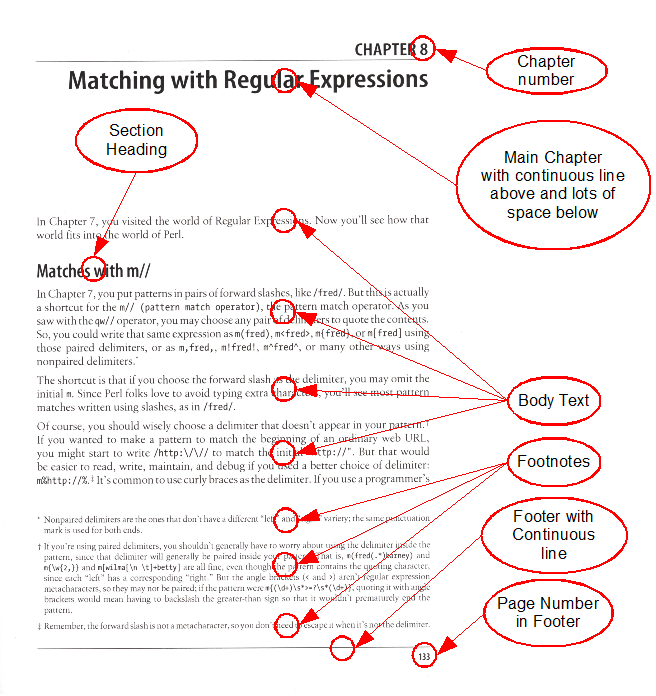Difference between revisions of "Documentation/Writer for Students/Theory"
(Created page with "Your thesis just as any other typical document, book or magazine will contain a number of recurring elements such as headings, footnotes, page layouts, the main text body, qu...") |
m |
||
| (8 intermediate revisions by 2 users not shown) | |||
| Line 1: | Line 1: | ||
| − | Your thesis | + | {{DISPLAYTITLE:Theory}} |
| − | a number of recurring elements such as headings, footnotes, | + | {{Documentation/WriterforStudentsTOC |
| − | the main text | + | |ShowPrevNext=block |
| − | All these elements need to be formatted uniformly. | + | |PrevPage=Documentation/Writer for Students/Introduction |
| + | |NextPage=Documentation/Writer for Students/Document Structure | ||
| + | }}__NOTOC__ | ||
| + | Your thesis like any other document, book or magazine will contain a number of recurring elements such as headings, footnotes, pagelayouts, the main text, quotations, bibliography, etc. (see illustration 1). All these elements need to be formatted uniformly. | ||
| − | Additionally many of these elements, such as pages, headings, footnotes, | + | '''Illustration 1. Page out of a book with examples of recurring elements''' |
| − | lists, illustrations etc. | + | <div style="overflow: hidden"> |
| + | <!--makes text to start after the picture--> | ||
| + | [[File:Wfs001 recurring elements.png|none]] | ||
| + | </div> | ||
| + | Additionally many of these elements, such as pages, headings, footnotes, lists, illustrations, the lines of an interview etc. require numbering. | ||
| − | + | You define these various settings once only and they will henceforth apply to the whole document independently of its length. | |
| − | + | {| class="wikitable" border="1" | |
| − | + | |- | |
| − | + | ! Primary paragraph styles | |
| + | ! Secondary paragraph styles | ||
| + | |- | ||
| + | | Text Body | ||
| + | | Table of contents of various levels | ||
| + | |- | ||
| + | | Headings of various levels | ||
| + | | Footnotes | ||
| + | |- | ||
| + | | | ||
| + | | Page numbering | ||
| + | |- | ||
| + | | | ||
| + | | Quotations | ||
| + | |- | ||
| + | | | ||
| + | | Bibliography | ||
| + | |- | ||
| + | | | ||
| + | | etc. etc. | ||
| + | |} | ||
| + | '''Table 1: There are only two primary paragraph styles, and all other paragraph styles group around these two.''<br> | ||
| + | '' Why this distinction is so important will become apparent in the course of the following chapters.''' | ||
| + | <br /> | ||
| + | <br /> | ||
| + | ---------- | ||
| + | <p style="text-align:left;">[[Documentation/Writer for Students/Introduction|< Previous Page]]</p> | ||
| + | <p style="text-align:right;">[[Documentation/Writer for Students/Document Structure|Next Page >]]</p> | ||
| + | [[Category:Documentation/Writer]] | ||
Latest revision as of 12:09, 5 September 2015
- Introduction
- Theory
- Document Structure
- Chapter Headings
- Chapter Numbering
- Table of Contents
- Outline
- Navigator
- Text Body
- Paragraph styles overview
- Reusing styles
- Default Page Formatting
- Title Page
- Papers without a Title Page
- Pages with and without numbering
- Roman Page Numbering
- Group Work
- Proofreading
- Numbered lists and bullets
- Line numbering
- Cross-references
- Footnotes
- Bibliography
- Quotes
- Tables
- Charts
- Pictures
- Snapshots
- Presentations & Graphics
- Cross tables (Statistics)
- Extra Long Web Adresses
- Fonts
- Emphasis
- Special Characters
- Non separable combinations
- Shortcut keys
- Mouse clicks
- PDFs
- Saving your files
- Several files open at once
- Search and replace
- Spell Check
- Synonyms
- Document Infos
- Labels and Form letters
- Help
- Installing Program
- Microsoft Word
- Practice I
- Practice II
Your thesis like any other document, book or magazine will contain a number of recurring elements such as headings, footnotes, pagelayouts, the main text, quotations, bibliography, etc. (see illustration 1). All these elements need to be formatted uniformly.
Illustration 1. Page out of a book with examples of recurring elements
Additionally many of these elements, such as pages, headings, footnotes, lists, illustrations, the lines of an interview etc. require numbering.
You define these various settings once only and they will henceforth apply to the whole document independently of its length.
| Primary paragraph styles | Secondary paragraph styles |
|---|---|
| Text Body | Table of contents of various levels |
| Headings of various levels | Footnotes |
| Page numbering | |
| Quotations | |
| Bibliography | |
| etc. etc. |
'Table 1: There are only two primary paragraph styles, and all other paragraph styles group around these two.
Why this distinction is so important will become apparent in the course of the following chapters.'
